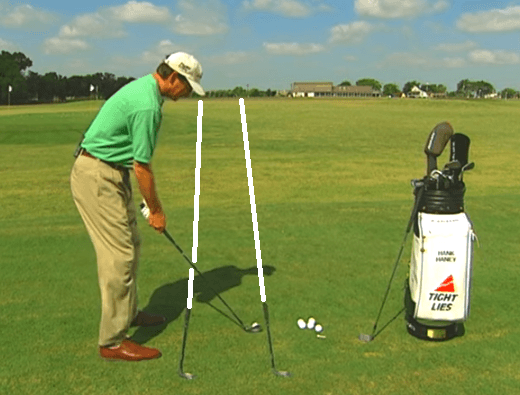
The putting green is a key component of your golf game. You have to practice on one before you can play on the real place. Rain, too much or too little water, or improperly cut greens all affect the performance of your greens. There are many methods to prepare for the course and how you should deal with them. You need to play golf on several different courses so you can learn about the green conditions. You need to be able to play on many courses before you understand what greens work.
Putting green

A putting green is an excellent tool for practicing golf. Usually they are rectangular in shape, but some have curved ends. Some people believe curved mats are easier to practice on than rectangular ones. Stimp meters are a popular tool for measuring the speed on a putting green. Once you become familiar with the green it will be easy to learn how it works.
Types
There are many varieties of golf greens. Some are flat and a great place to practice low-spin shots, while others are more challenging. Whatever the case, it's important to have a golf putting green with enough space for low-spin shots. Although greens come in many shapes, most are either oval or oblong. You can choose to have the greens flat or slightly sloped. There are contours on all sides. The choice of a putting-green design for your course is entirely up to you.
Sizes
There are many different sizes for putting greens in golf, but there are some common rules. First, images must not exceed one inch per five feet. The size of books that contain putting green images should not exceed 4 1/4 inches x 7 inches. Although they can be larger, hole location sheets should not exceed 9x7 inches. Magnification of the putting green information is permitted, but only for those wearing prescription glasses.
Cost

The cost of golf-putting greens will vary depending upon the type of material and the size of your installation. A synthetic putting course can cost up to $20 per square feet, while a real one can be as low as $.70 per sq. foot. A larger golf green will require more materials, and may take more time to install. A professional putting green installation is likely to cost anywhere from $18,000 to $24,000.
Placement
One of the most important parts of a golf putting green is its pin placement. It is important for players to know how they should approach it. The pin placed at the back of the green may require a longer shot than if it is on the front. Therefore, players must decide where to position the ball. Pin placement on golf courses can vary from one day of the week to another. This is because superintendents rotate the pin placements on each green.
FAQ
Do you have any tips on how to play golf properly?
Yes. You can take lessons at several schools to learn how golf is played. You will need new equipment, such as a set or clubs.
How often should I go to the golf course?
It all depends on your time. However, most recommend practicing at least twice per week.
You should play at least four times per week if you want to become an expert golfer.
What kind of clubs do I need?
There are many kinds of clubs. Most players start with a driver, a heavy weight club that allows them hit the ball further. Other clubs include woods, irons, wedges, and putters.
Woods are longer clubs, designed to let players get as close to the pin as possible while still being able reach the green. They are often used for long drives and approach shots.
Irons, or shorter clubs, are used to help players hit the pin closer. They are often used for short-distance shots such as putting and chipping.
Specialized clubs are used to control and direct the ball's flight path. They are typically used for shots that require precise direction.
Putters are small clubs designed to roll the ball towards the cup. They are used by players to make short putts.
The type and type of shot you wish to make will dictate the club you use. Different shots will suit different clubs.
Drivers can help you hit the ball further than expected. Wooden woods are excellent for driving long distances. Irons are ideal for short shots. You can control the flight of your ball with your wedges. Putters work well for rolling a ball into the hole.
What are the differences between different golf courses?
There are many types of golf courses. Some courses are intended for beginners while others can be used by more experienced players.
Some golf courses are close to lakes, rivers, mountains and forests. Others are found in urban areas. Golf courses range from public parks to private estates.
Statistics
- Buying a set of Titleist or Taylor-Made irons for nearly $1,000 is simply not necessary and likely a waste of money. (golficity.com)
- They do this by means of assessing and rating courses according to the average good score of a "bogey golfer," a player with a handicap of around 20. (en.wikipedia.org)
- Professional golfers typically make between 60% and 70% of greens in regulation. (en.wikipedia.org)
- They do this by means of assessing and rating courses according to the average good score of a "bogey golfer," a player with a handicap of around 20. (en.wikipedia.org)
External Links
How To
How To Hit A Perfect Bunker Shot
A bunker shot, a type or golf shot that aims at a particular spot on the green (the holes) to ensure your ball hits the ground without bouncing off of the surface, is one example. This is done by taking advantage if the green slopes. The goal is to direct the ball as far as possible towards hole.
When playing golf, you want to find the best line to reach your target point. You have to consider several factors such as how much distance away you are from the target, what kind of terrain you're hitting through, whether the ball needs to bounce off the ground or fly straight, and even weather conditions.
It is important to understand the fundamentals of bunker shooting in order for you to achieve perfect results. It is important to determine whether you are going uphill, or downhill. If you are looking uphill, a drawing board is necessary. If you're facing downhill, you'll need to swing with a fade. Next, determine how fast your body needs to move to stop the ball bouncing off of the green. This is done by measuring how far the ball is from you and which direction it is going. The final step is to measure the size of your bunker.
After you have figured out these basics, you can begin swinging. Swing hard enough to let the ball go past the face of the club head but slow enough to keep it from bouncing off the green, just like you would when making any other shot. You can start your approach once you have found the right speed, trajectory and direction. Slowly approach the ball until you can see the landing area. Take one more look at the ball and release it. If all goes according to plan you will have a flawless bunker shot.